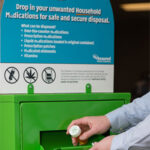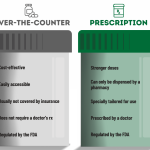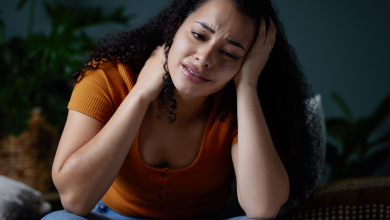How To Dispose Prescription Bottles (10 Ideas You Should Try)
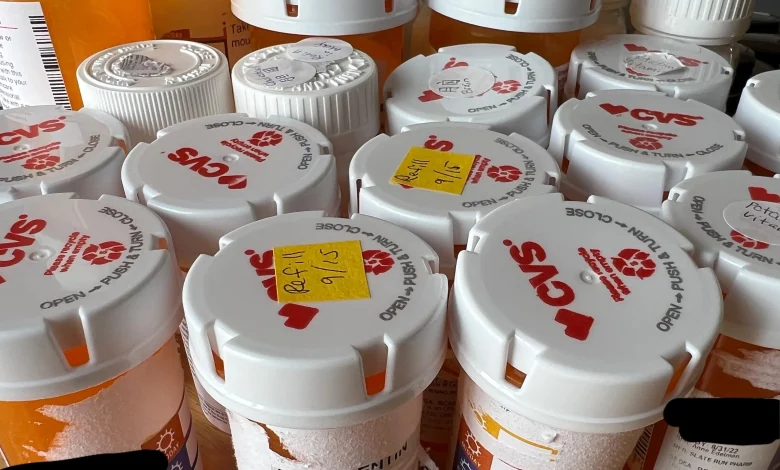
Prescription bottles are containers used to hold medications that have been prescribed by a healthcare provider. These bottles are typically made of plastic and come in a variety of shapes and sizes. They are often labeled with information such as the patient’s name, the name of the medication, the dosage, and instructions for use.
The purpose of prescription bottles is to provide a safe and secure way to store medications and ensure that patients are taking the correct dosage at the appropriate time. Prescription bottles typically have child-resistant caps to prevent accidental ingestion by children, and some may also have special features such as tamper-evident seals to ensure that the medication has not been tampered with.
The average number of empty pill containers in a home can vary widely depending on the number of prescription medications that are regularly used by the people living in the home. Additionally, the frequency of medication refills and the number of people living in the home can also impact the number of empty pill containers that accumulate over time.
According to a survey by the National Community Pharmacists Association, the average American takes four prescription medications per day, which means there could be up to four empty pill containers per person per day. In 2018, approximately 4.3 billion prescriptions were filled in the United States, resulting in billions of empty prescription bottles.
According to the Plastic Oceans Foundation, approximately 500 billion plastic bottles are produced globally each year, including prescription bottles.
Many prescription bottles are not recyclable due to the type of plastic used, so they often end up in landfills or oceans. In this article we shall be taking a good look a prescription bottles and what you can do with them after the medication has been exhausted.
History of Prescription Bottles
The use of prescription bottles to hold medications dates back to the early 20th century. Prior to this time, medications were often dispensed in loose form, and patients were expected to measure out their own doses. However, as medications became more potent and dosage accuracy became increasingly important, the use of standardized containers for prescription medications became more widespread.
The first prescription bottles were made of glass, and were typically hand-blown by skilled craftsmen. These bottles were often adorned with decorative features such as embossed labels, and were sometimes even made to resemble miniature works of art. However, glass bottles were heavy and fragile, and were eventually replaced by plastic bottles in the mid-20th century.
The use of child-resistant caps on prescription bottles was first introduced in the 1960s, in response to concerns about accidental poisoning in children. These caps typically require the user to press down and turn in order to open the bottle, making it more difficult for young children to access the medication inside.
In recent years, advances in technology have led to the development of “smart” prescription bottles that can track medication usage and send reminders to patients. These bottles may be equipped with sensors or wireless technology that can monitor the amount of medication remaining in the bottle, and can even alert healthcare providers if the patient fails to take their medication as prescribed.
Overall, the history of prescription bottles reflects the ongoing efforts of healthcare providers and researchers to improve medication safety and promote better health outcomes for patients.
10 Prescription Bottles Ideas You Should Try
If you have too many empty prescription bottles in your house, it’s important to properly dispose of them to avoid clutter and potential hazards. Here are 10 ideas on what to do:
1. Check with your local pharmacy: Some pharmacies have a medication disposal program or may accept empty prescription bottles for recycling. Contact your local pharmacy to see if they offer this service.
2. Recycling: Many cities offer recycling programs that accept prescription bottles. Check with your local recycling center to see if they accept prescription bottles.
3. Reuse: You can reuse empty prescription bottles for a variety of purposes, such as storing small items like beads, buttons, or nails. You can also use them to organize your desk or craft supplies.
4. Donate: Some organizations, such as animal shelters or free clinics, may accept empty prescription bottles for their own use. Contact these organizations to see if they accept donations.
5. Crafts: You can use empty prescription bottles for crafting projects, such as creating miniature planters or making a DIY snow globe.
6. Upcycling: Transform your empty prescription bottles into something new and useful. You can use them as a keychain, a travel-sized first-aid kit, or even a waterproof container for your phone or other small items.
7. Pill reminders: Keep a few empty prescription bottles on hand to use as a reminder to take your pills. You can label them with the day of the week and fill them with pills for each day.
8. Emergency kit: Fill an empty prescription bottle with small items you might need in an emergency, such as matches, a flashlight, or a whistle. This way, you can easily grab it in case of an emergency.
9. Storage: Empty prescription bottles can be used for storing small items, such as buttons, screws, and nails. You can label them and stack them in a drawer or container for easy access.
10. Trash: If you can’t find a use for your empty prescription bottles, dispose of them in the trash. Be sure to remove any labels that contain personal information first.
Where Can I Donate Empty Prescription Bottles?
There are several organizations and programs that accept empty prescription bottles for donation, including:
1. Matthew 25 Ministries: This organization collects and repurposes prescription bottles to be sent to developing countries for use in medical clinics and disaster relief efforts.
2. Lions Club International: Some Lions Clubs accept donations of prescription bottles to be repurposed for medical missions and disaster relief.
3. Local animal shelters and veterinary clinics: Many animal shelters and veterinary clinics accept donations of empty prescription bottles to be used for storing medications for animals.
4. Local pharmacies: Some pharmacies have programs in place for collecting and recycling empty prescription bottles.
5. Recycling centers: Some recycling centers accept prescription bottles made from certain types of plastic, such as #5 plastic.
It’s important to note that some organizations may have specific requirements for donating prescription bottles, such as removing all labels and ensuring they are clean and dry. It’s best to check with the specific organization or program before donating.
Environmental Benefits of Repurposing Used Pescription Bottles Ideas
Repurposing or recycling empty prescription bottles can have several environmental benefits, including:
1. Reducing landfill waste: Prescription bottles are made of plastic, which can take hundreds of years to decompose in landfills. By recycling or repurposing them, we can reduce the amount of plastic waste that ends up in landfills.
2. Conserving natural resources: By recycling empty prescription bottles, we can help reduce the demand for virgin plastic resin, which is used to manufacture new bottles. This can help conserve natural resources like crude oil and natural gas.
3. Saving energy: Recycling plastic requires less energy than producing new plastic from raw materials. By recycling empty prescription bottles, we can help reduce the amount of energy used in the manufacturing process.
4. Preventing pollution: When plastic waste is not disposed of properly, it can end up in our oceans and waterways, where it can harm marine life and ecosystems. By recycling empty prescription bottles, we can help prevent this type of pollution.
5. Creating new products: Recycling prescription bottles can help create new products, such as plastic lumber or other types of plastic products. By giving the bottles a new life, we can help reduce the need for new plastic products to be manufactured.
Overall, repurposing or recycling empty prescription bottles can help reduce our environmental impact and contribute to a more sustainable future.
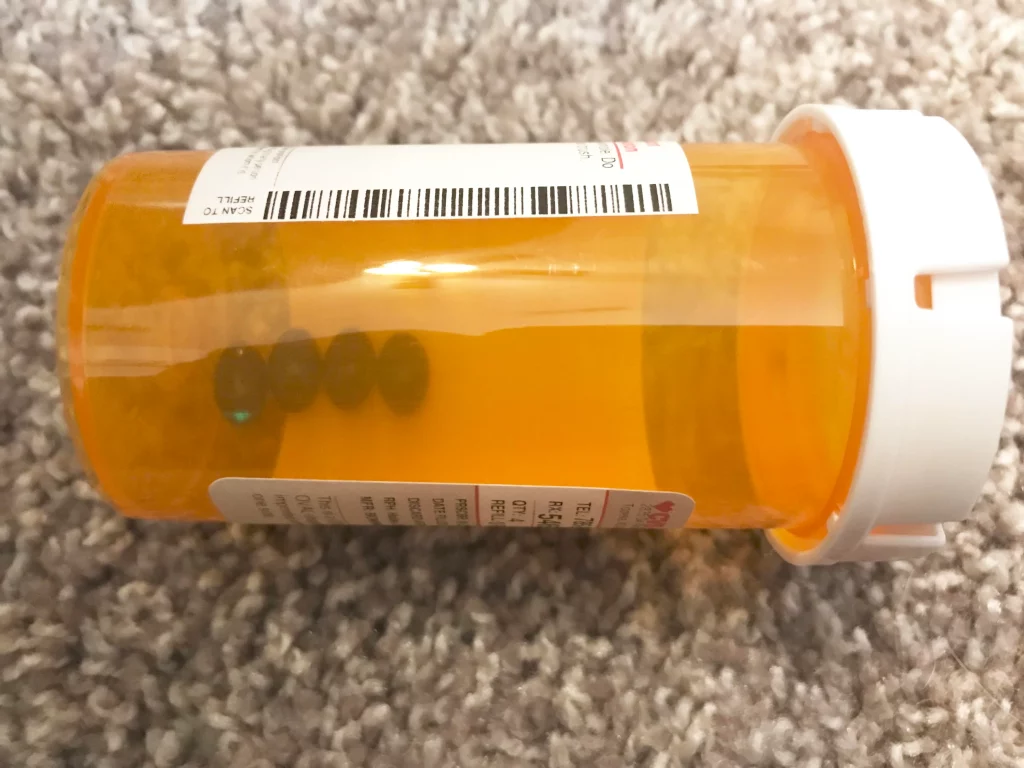
How To Dispose Of Empty Prescription Bottles
Empty prescription bottles can usually be disposed of along with your regular household waste, but there are a few things to keep in mind:
1. Remove all personal information: Before disposing of any prescription bottle, be sure to remove all personal information, including your name, address, prescription number, and any other identifying information. This can be done by either scratching out the information with a permanent marker or peeling off any labels or stickers.
2. Check with your local recycling center: Some recycling centers may accept prescription bottles for recycling. Check with your local center to see if they have specific guidelines or requirements for recycling prescription bottles.
3. Consider donating: As mentioned earlier, some organizations may accept prescription bottles for reuse. Check with local charities or medical organizations to see if they have a need for empty prescription bottles.
4. Reuse at home: Prescription bottles can also be reused around the house for storing small items like buttons, beads, or other craft supplies.
5. Follow any state or local guidelines: Some states or localities may have specific guidelines for the disposal of prescription bottles. Be sure to follow any applicable guidelines to ensure safe and proper disposal.
It is important to note that if your prescription bottle contained medication, you should never reuse or donate the bottle. Even if the bottle is empty, it may still contain traces of medication, which can be dangerous if ingested. Instead, dispose of the bottle in a safe and responsible manner.

